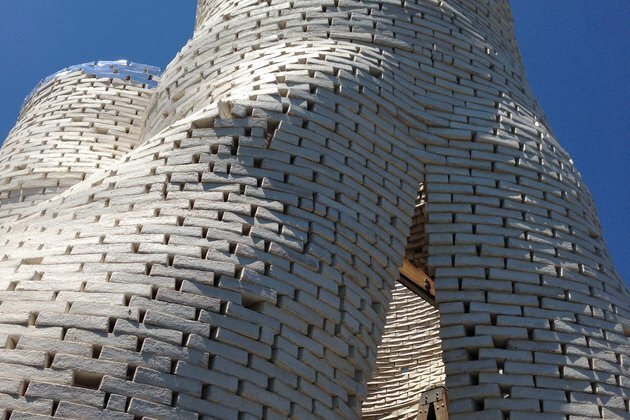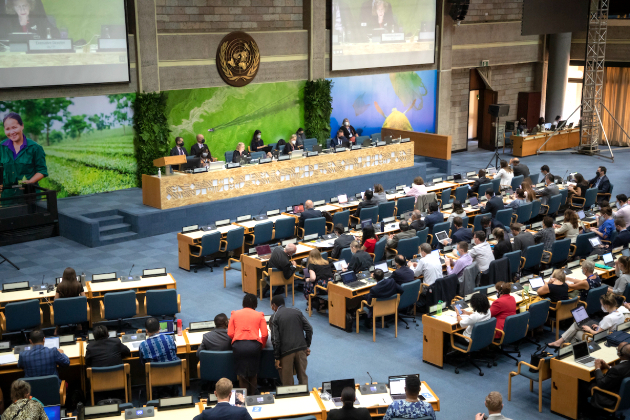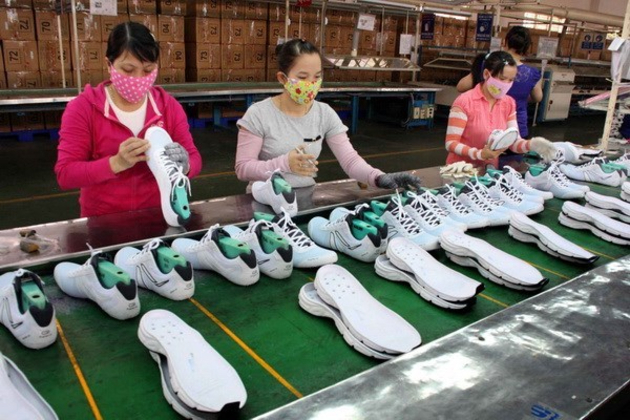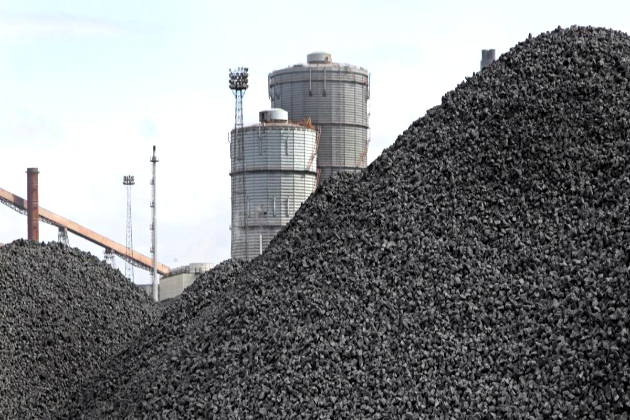How fungi can help create a green construction industry
The Conversation
04 Feb 2020, 03:59 GMT+10

The world of fungi has attracted a lot of interest and seems to be becoming very fashionable of late. A new exhibition at Somerset House in London, for example, is dedicated to "the remarkable mushroom". No surprise: we're being promised that mushrooms may be the key to a sustainable future in fields as diverse as fashion, toxic spill clean ups, mental health and construction. It's in this last field that my own interests lie.
Climate change is the fundamental design problem of our time: buildings are hugely complicit in the crisis. Together, buildings and construction contribute 39% of the world's carbon footprint. Energy used to heat, cool and light buildings accounts for 28% of these emissions: households are the biggest emitter of greenhouse gases since 2015, accounting for a quarter of total UK greenhouse gas emissions in 2017.
The remaining 11% of buildings' carbon emissions consists of those associated with construction and building materials. The UK construction industry, for example, uses around 400 million tonnes of materials each year and approximately 100 million tonnes become waste. Cement alone is responsible for a whopping 8% of global CO₂ emissions. Compare this to the much maligned global aviation industry, which emits 2% of all human-induced CO₂ emissions. Buildings and, by association, the construction industry, are profoundly responsible for climate change.
There is evidently a real need for the construction industry to reduce the impact of its material and energy use and to take part in the transition towards a more sustainable economy by researching and using alternative materials. This is not an absurd ask: such materials already exist.
Mushroom materials
And yes, one such material happens to be derived from fungi: mycelium composites. This material is created by growing mycelium - the thread-like main body of a fungus - of certain mushroom-producing fungi on agricultural wastes.
Mycelium are mainly composed of a web of filaments called "hyphae", which acts as a natural binder, growing to form huge networks called "mycelia". These grow by digesting nutrients from agricultural waste while bonding to the surface of the waste material, acting as a natural self-assembling glue. The entire process uses biological growth rather than expensive, energy intensive manufacturing processes.
Mycelium materials offer an exciting opportunity to upcycle agricultural waste into a low-cost, sustainable and biodegradable material alternative. This could potentially reduce the use of fossil fuel dependant materials. The materials are low-density, making them very light compared to other materials used in construction. They also have excellent thermal and fire resistant properties.
Fungal architecture
To date, mycelium materials have been used in a number of inventive ways in building projects. One particular company of note is The Living, a New York based architectural firm which designed an organic mycelium tower known as "Hy-Fi" in the courtyard of MoMA's PS1 space in midtown Manhattan. Designed as part of MoMA's Young Architects Program, the structure illustrates the potential of this biodegradable material, in this case made from farm waste and cultured fungus grown in brick-shaped moulds.
Another project of note is MycoTree, a spatial branching structure made out of load-bearing mycelium components. This research project was constructed as the centrepiece for the "Beyond Mining - Urban Growth" exhibition at the Seoul Biennale of Architecture and Urbanism 2017 in Seoul, Korea. The project illustrates a provocative vision of how building materials made from mycelium can achieve structural stability. This opens up the possibility of using the material structurally and safely within the construction industry.
Mycelium materials have also been analysed for uses ranging from acoustic absorbers, formed packaging materials and building insulation. And NASA is currently researching using mycelium to build habitable dwellings on Mars.
Recycled buildings
I am investigating the development of mycelium materials using locally sourced materials such as wheat straw. Wheat straw is a cheap and abundant source of waste in the Yorkshire region, so would be a fantastic raw material for construction. My main objective is to develop a material for use in non-load bearing applications, such as internal wall construction and facade cladding. The material displays similar structural properties to those of natural materials like wood.
The development of mycelium materials from locally sourced agricultural waste could reduce the construction industry's reliance on traditional materials, which could improve its carbon footprint. Mycelium composite manufacturing also has the potential to be a major driving force in developing new bioindustries in rural areas, generating sustainable economic growth while creating new jobs.
The construction industry is faced with a choice. It must be revolutionised. If we carry with business as usual, we must live with the potentially catastrophic consequences of climate change.
Author: Ian Fletcher - Senior Lecturer in Architecture, Leeds Beckett University 
 Share
Share
 Tweet
Tweet
 Share
Share
 Flip
Flip
 Email
Email
Watch latest videos
Subscribe and Follow
Get a daily dose of North Korea Times news through our daily email, its complimentary and keeps you fully up to date with world and business news as well.
News RELEASES
Publish news of your business, community or sports group, personnel appointments, major event and more by submitting a news release to North Korea Times.
More InformationInternational
SectionTrump lifts shower pressure limits to protect 'beautiful hair'
WASHINGTON, D.C.: President Donald Trump, who had often complained about weak water pressure in showers, has signed an order to remove...
Apple airlifts iPhones from India to dodge new US tariffs
NEW DELHI, India: Apple has ramped up shipments of iPhones from India to the United States, chartering aircraft to move hundreds of...
US halts $4 million climate grant to Princeton over policy clash
WASHINGTON, D.C.: The U.S. Commerce Department during the week ended about US$4 million in funding to Princeton University for assessing...
Hong Kong social worker jailed after protest retrial
HONG KONG: A Hong Kong social worker has been handed a prison sentence of nearly four years after a retrial linked to the 2019 pro-democracy...
US pulls out of shipping decarbonisation talks in London
LONDON, UK: The United States has pulled out of international talks in London about reducing pollution from ships. These talks are...
US warns of Chinese spy tactics targeting officials
WASHINGTON, D.C.: The U.S. government warned this week that Chinese spies are using trickery to try to hire current and former U.S....
Business
SectionVietnam to crack down on rerouted Chinese goods to avoid US tariffs
HANOI, Vietnam: Vietnam is preparing a series of trade enforcement measures as it scrambles to shield itself from sweeping U.S. tariffs,...
AI boom drives TSMC revenue to record highs
TAIPEI, TAIWAN: A strong push from artificial intelligence demand lifted TSMC's quarterly revenue to new highs, with the chipmaker...
Aurora's driverless trucks to tackle tough weather post Texas launch
PITTSBURGH, Pennsylvania: Aurora Innovation says its driverless trucks will eventually be equipped to handle tough weather conditions,...
US Treasury to ease regulatory burden on small banks
WASHINGTON, D.C.: The U.S. Treasury will step more firmly into bank regulation to ensure better balance and less burdensome oversight,...
White House Plans New Push to Boost US coal amid AI energy surge
WASHINGTON, D.C.: The White House is preparing a new directive aimed at reviving domestic coal production as energy demands surge from...
Universal plans major theme park north of London
LONDON, UK: Universal is setting its sights on Britain as the next destination for its global theme park expansion, marking a major...













